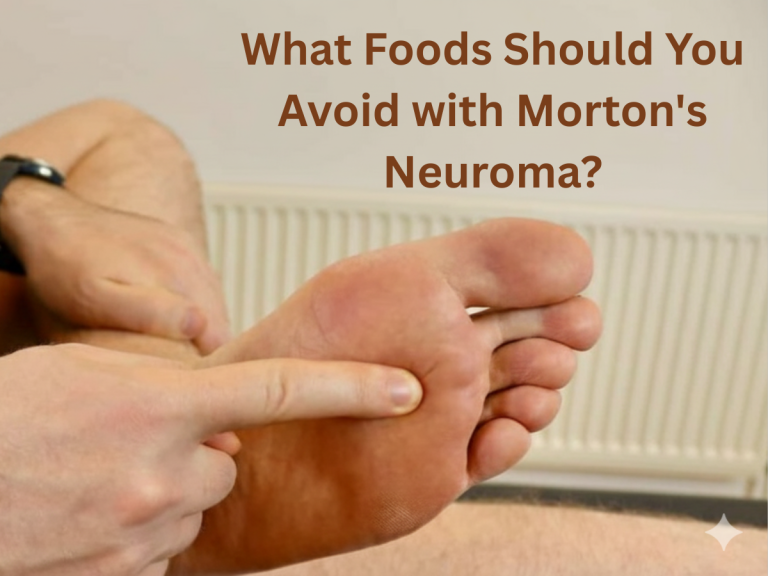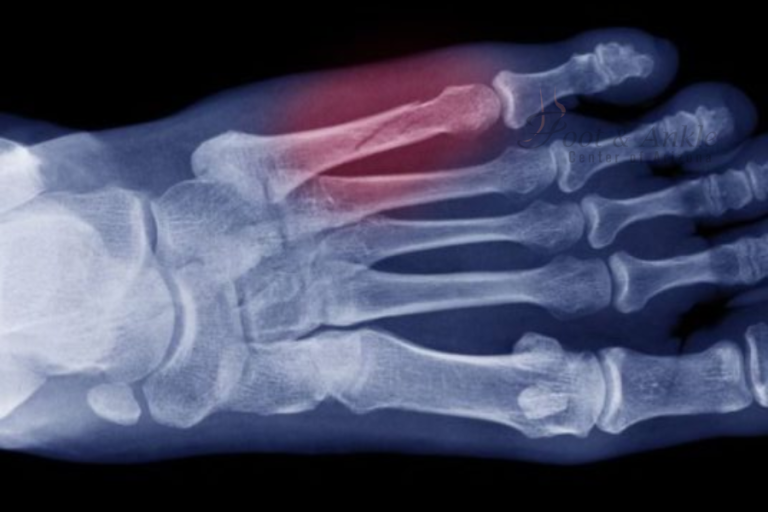Bunions are essentially a pretty common issue with one’s feet that could cause an incredible amount of pain and discomfort. That’s the reason many patients resolve to seek surgical treatment. On the other hand, bunionectomy is the surgical treatment for the removal of a bunion, which might help alleviate the symptoms. However, anybody who is considering this surgery needs to be aware that recovery is very important. This article shall walk us through the different stages of recovery from bunionectomy, factors that would impact duration, and tips for going about the recovery process without much hiccup. So, how long does a bunionectomy recovery take? Let’s break it down.
Bunions and Bunionectomy: What You Need to Know
Before getting into the recovery timeline, let us first discuss what a bunion is and what is involved in a bunionectomy. A bunion refers to a bony prominence at the base of the big toe, causing the toe to deviate towards the other toes. This might lead to several symptoms, like pain, swelling, and difficulty in walking. It encompasses the surgical removal of the bony prominence followed by realignment of the toe for normal functioning.
Initial Recovery Phase: The First Few Days
The first sometimes few days immediately after bunionectomy surgery, the initial recovery phase is undertaken. In this aspect, treatment is usually directed towards the management of pain and preventing complications. It is usually ordered that the foot should be elevated, and pain medications would also be ordered for the patient. It’s very important to follow the instructions from your surgeon regarding post-operative care to recover nicely.
Pain Management: The most common symptoms after surgery are pains in the treated area; however these can be managed effectively with a little help from prescribed pain relievers. Ice packs may be recommended to reduce swelling and numb the area.
Mobility: Most often, mobility is restricted in the patient in the first few bony bump that forms on the joint at the base of your big toe. This is the onward displacement of some of the bones, majorly in the front of your foot. That makes the big toe tip drag toward the smaller ones, and the base joint of your big toe bulge out. With time, misalignment might lead to pain, swelling, and discomfort, which may make it difficult to walk or wear shoes comfortably.
A bunionectomy is a surgical procedure done to correct this misalignment. Though there are many types of bunionectomy procedures, the common ones range from simple removal of the bunion to highly complicated procedures requiring readjustment in the bone, ligaments, and tendons. The type of surgery your doctor will recommend depends upon the severity of your bunion and overall health.
Immediate Post-Surgery Period
Immediately following bunionectomy, you will likely need to relax in a recovery area for about an hour or so, during which time your vital signs will have been checked and your stability ensured. Your foot is then kept bandaged during this time. You may be fitted with a surgical shoe or probably a cast to protect the foot and align it. This incorporates pain management, which is very critical in this phase. Your doctor will prescribe medications that will aid in managing any form of discomfort.
The First Couple of Days after Surgery
This means that, during the first few days after the bunionectomy, rest is imperative. Elevate your foot as much as possible to reduce swelling. You can use ice packs applied to the area to reduce swelling and pain. This is all contingent upon how much weight your doctor allows you to place on the foot. Many times, especially during the first week or so, you will be warned against putting weight on the affected foot.
Pain and Swelling Management
Pain and Swelling are known to occur following Bunion Surgery. Your doctor will prescribe medications for pain relief. It is of prime importance to take the medication in moderation as directed and not to take more than the recommended dose. Along with medications, it is essential to elevate your foot and ice pack it regularly to reduce swelling and, thereby, pain considerably. This should be done especially during the
The first Two Weeks Following Surgery
The first fortnight after a bunionectomy is quite crucial for the early phase of recovery. You will attend follow-up checkups with your surgeon to monitor your progress and, of course, your surgical site. Your doctor might change the bandages over the wound and look out for any signs of infection or other complications.
Removal of Stitches
Stitches are generally removed two weeks after surgery. At this visit your doctor will inspect the incision site to check that it is healing well. This is a good opportunity to discuss any concerns you may be experiencing as you recover, and to ask questions about what to expect in terms of further treatment.
Gradually Increasing Your Activity
You can gradually increase your activity level after the first two weeks, but be sure to follow your doctor’s instructions. Now you can partially bear some weight but with caution. Probably you will need to avoid having full weight on your foot; crutches or a walker will help you move around.
Weeks 3-6: Gradual Healing
Third to sixth week: Your foot will slowly start getting better during this time. Gradually, the pain and swelling would lessen, and you may be able to support some weight in your foot; however, one must proceed with caution, following the doctor’s advice. It is in this phase that one might be given physical therapy to start restoring strength and flexibility to the foot.
Therapy
This, then, is an important part of the recovery process following bunionectomy: physical therapy. The physical therapist will guide you through some exercises aimed at helping you improve your range of motion, strengthen a few muscles in your foot and ankle, and eventually walk normally again. You can help yourself in recovering properly by attending these sessions regularly and exercising at home as prescribed.
Returning to Normal Activities
By six weeks, many patients are well enough to gradually resume normal activities, although high-impact activities and sports are still mostly not allowed. Precise advice about when it is safe to start other activities, work, or light exercise can be provided by the doctor.
Months 2 to 6:Long-Term Recovery
The overall long-term recovery phase extends from about two months to six months postoperatively. During this time, your foot further heals, and you are returning to regular activities. Many people start feeling much better in two months, although it may take up to six months or longer for you to fully recover—sometimes even longer depending on the individual and surgical complexity.
Activity Level
By two months, most patients can walk more comfortably and can undertake low-impact activities. However, high-impact sports or actions that stress the foot are to be avoided until your doctor allows you to have them. At this time continuing your physical therapy and adhering to your surgeon are crucial as one recovers.
Monitoring Progress
In the recovery process, you will still have follow-up visits with your doctor regularly. These enable your surgeon to monitor your progress and that your foot is healing properly. He or she will also address any concerns you may have regarding your recovery. It is important to keep such appointments and always be candid about your recovery with your healthcare provider.
Factors that Affect Recovery Time after Bunionectomy
Several factors turn into a degree atm which bunionectomy recovery varies from person to person, including:
- The severity of the bunion: Higher severity bunions indicate more complicated surgery and hence a greater recovery time.
- Type of Surgery: There are many surgical methodologies with varying recovery times for each.
- Patient’s Overall Health: Particular patients’ health, therefore, can influence healing. Surgeon adherence to post-operative instructions regarding your weight-bearing, activity levels. And adherence to physical therapy can make all the difference in recovery speed.
- Age: Generally, older patients recover more slowly than younger patients.
Smooth Recovery Tips
The recovery period surely is a bit long, but there are quite a few things one can do to accelerate this period of healing and make the recovery process smooth. These include:
- Follow Medical Advice: It is important to follow your doctor’s post-operative instructions regarding weight bearing and medication.
- Elevate Foot: Keeping your foot raised as much as possible in the first few weeks shall help reduce swelling and foster healthy healing.
- Apply ice: Show ice packs regularly to reduce swelling and pain.
- Physical therapy: Continuing physical therapy will accelerate the recovery time and the overall result.
- Good nutrition: Proper nutrition aids in healing; hence, stick to a well-balanced diet that is full of vitamins and minerals.
- Keep hydrated: Drink plenty of water to stay healthy and heal well.
- Avoid smoking: It diminishes blood flow and the rate of healing.
- Be Patient: Recovery will take time, so one needs to be patient and give the body time to recover completely.
Conclusion
So, how long after bunionectomy is the recovery time? While the timeline may vary owing to several factors, most patients can expect it to be around 6 weeks to 6 months. This means rest and limited activity in the immediate post-surgery period, progressing mobility, and physical therapy afterward. By following your doctor’s advice and being proactive in supporting your recovery, you will hopefully see a great improvement in your foot health and be able to return to normal activities.
Whether you are thinking of undergoing a bunionectomy or if you have queries regarding the recovery phase, rest assured that the Foot and Ankle Center of Arizona will help you sail through it. Dr. Kris A. DiNucci and his efficient team are dedicated to providing end-to-end care for the best possible results. Call us today at +1 480.342.9999 for a consultation, and take your first step toward a pain-free future.




